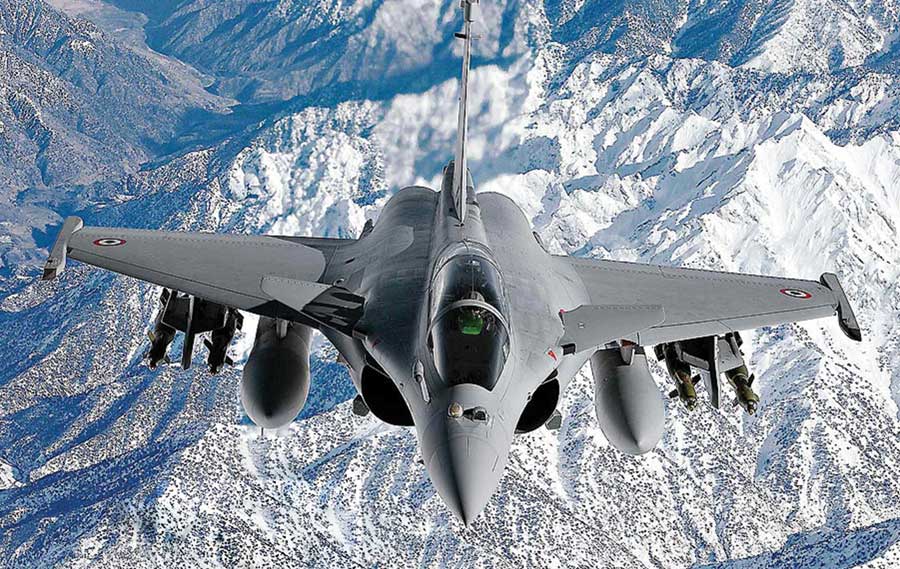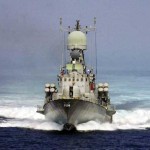India has learned the hard way that a unilateral desire for peace cannot bring about peace. A country can enjoy peace only if it can defend peace. The US offer of the most high-end weapon systems and to transfer F-16/F-18 entire assembly line to India with full transfer of technology is alluring. Whether that will upset the already floundering, cost-prohibitive FGFA programme with the Russians will be a test of time. Sorting out logistics chains and improving serviceability of the varied fleet of aircraft in its inventory should get priority.
India has learned the hard way that a unilateral desire for peace cannot bring about peace…
The Indian Air Force (IAF) was formed through an Act of 1932 and the first Squadron came up on April 01, 1933. Then known as the Royal Indian Air Force (RIAF), it imbibed rich British aviation practices and also gained operational experience in the Burma Campaign of World War II. At the time of independence, the IAF inherited a few of the aviation assets including Hawker Tempest and Spitfires. The French were the first to offer their fighter aircraft in the early 1950s. The Americans also reluctantly offered a few helicopters. By the late 1950s, India had received Soviet-built medium-lift transport aircraft, the An-12 and a top-of-the-line MiG-21 fighter. With this was to begin a relationship which would one day make up for nearly 75 per cent of the inventory of the IAF of Soviet/Russian origin.
From the 1990s onwards, equipment also came from some other European countries, Israel and later, the USA. Meanwhile Hindustan Aeronautics Limited (HAL) which was an established aircraft industry, began manufacturing. Its initial approach was mostly to licence-build foreign aircraft, the French Allouette, British Gnat and the Russian MiG series among others. Sourcing from different countries had its own complexities of mixed inventories of spares and overhaul management. This sometimes resulted in lower aircraft serviceability and higher maintenance cost. Also, in many cases, the Life Cycle costs increased substantially.
British Aircraft
The 1950s saw the addition of British De Havilland Vampire, English Electric Canberra twin-engine jet-powered medium bomber, its photo-recce variant and the B-24 Liberators. Initial British transport aircraft were Oxford, Auster, Devon and Vickers Viscount. The light-weight swept-wing fighter Folland Gnat was with the IAF from 1958 to 1978. They played a stellar role in the 1965 and 1971 wars with Pakistan and were christened the ‘Sabre-slayers’. The famous Keelor brothers and the IAF’s first and only Param Vir Chakra Nirmaljit Singh Sekhon, earned their name and valour on the Gnat aircraft.
The erstwhile Soviet Union, now Russia has been India’s time-tested friend since the 1950s…
The Hawker Hunter ground attack aircraft joined the IAF in 1957. The SEPECAT Jaguar, the Anglo-French deep penetration strike aircraft were ordered in 1978 and 120 were built by HAL under licence. The IAF has since sponsored major avionics updates through HAL, including the Display Attack Ranging Inertial Navigation (DARIN) system, autopilot, cockpit avionics, weapons and radar. The IAF currently has 125 aircraft in five Squadrons. There is a plan to re-engine the aircraft with the more powerful Honeywell F125IN engine. Jaguars could fly till 2030. 89 Hawker Siddley HS-748 medium turboprop aircraft were licence-produced in India by HAL. A few of these aircraft are still used for communication duties. HAL’s HT-2 basic piston engine trainer and HAL-built Kiran (HJT-16) intermediate jet trainer were influenced by the British Chipmunk and Jet Provost designs respectively. Kirans have the Rolls-Royce Viper engine and later versions Bristol Siddeley Orpheus engine. BAE Systems Hawk Mk 132, a British single-engine Advanced Jet Trainer is used for training and low cost combat. Being built by HAL under licence, the numbers will soon be around 120.
The French Connection
Prime Minister Modi’s Government has decided to restrict initial MMRCA plan of 126 aircraft to only 36 Rafale jets. The Rafale had won the MMRCA competition due its specification compliance and lower life-cycle cost. The long drawn negotiations with Dassault for 36 aircraft are reportedly in their final stages. The French had supported India during the Cold War and have also tacitly supported India as a nuclear power. Aviation has been a real solid pillar in the Indo-French relationship since the early fifties. India had acquired 104 Dassault Ouragans initially and they were replaced by Mystere IVAs in 1957. On September 07, 1965, an Indian Mystere shot down a Pakistani Lockheed F-104 Starfighter in a raid over Sargodha. 12 Breguet Alize carrier-based anti-submarine warfare aircraft were acquired by the Indian Navy and operated from aircraft carrier Vikrant.
Over 300 Aerospatiale Allouette III Light Utility Helicopter were manufactured under licence by HAL. Christened ‘Chetak’, the later lighter versions ‘Cheetah’ and ‘Cheetal’ were for high altitude operations in areas such as the Siachen glacier. The IAF purchased Dassault Mirage-2000 fighters in 1984 and the same have been upgraded to Mirage-2000-5 Mk II standard recently. Mirages will fly in the IAF beyond 2030. HAL carries out overhaul of Mirage aircraft and its engines. Most components and spares still come from abroad.
The Soviet Union helped India set up three new factories for HAL at Nasik (aircraft), Koraput (engines) and Hyderabad (avionics)…
Meanwhile, the IAF continues to wait for the finalisation of the Rafale contract to partially make good its depleting fighter assets. There is a possibility that a large Indian corporate organisation may get the contract to build the remaining 90 aircraft as part of Make-in-India programme. The Rafale will bring in new technologies requiring HAL and private industry to imbibe the same. Indian civil aviation has a large Airbus aircraft fleet.
Indo-Russian Aviation Bear Hug
The Soviet Union (now Russia) has been India’s time tested friend since the 1950s. Six medium-lift cargo aircraft Ilyushin IL-14 joined IAF in 1955. Mi-4 helicopters, bought in the early 1960s, played an important role in the 1971 Bangladesh war undertaking India’s first heli-borne operation near Sylhet. Two squadrons of the ten-tonne class medium-lift An-12s operated till their retirement from service in the 1990s. Beginning 1962, India began receiving MiG-21s with Transfer of Technology to produce in India. Over 1,000 were built/inducted. India also got its initial missiles from the Soviets. Starting with first-generation K-13 air-to-air missiles, they were followed by R-73, R-27 and R-77 RVVAE among others in subsequent years. Similarly SA-2 (Dvina) was India’s first Surface-to-Air missile. SA-3 Pechora and OSA-AK SAM-8 joined the IAF later. The state-of-the-art jointly developed Indo-Russian BrahMos supersonic cruise missile is already under induction into the Indian Armed Forces and may also be exported.
The Soviets helped India set up three new factories for HAL at Nasik (aircraft), Koraput (engines) and Hyderabad (avionics). 150 swing-wing MiG-23 joined the IAF starting 1982 and flew till 2009. The IAF got 160 MiG-27s of which 150 were assembled in India. 63 of the 80 MiG-29s procured are being upgraded currently. Five squadrons of 125 upgraded MiG-21 ‘Bison’ will see IAF through till 2022. Sukhoi Su-30MKI, an advanced variant of SU-27, was developed for the IAF after a joint design and development project in early 2000s. It is being licence-produced by HAL, a total of 272 aircraft are contracted for and 240 have already joined the IAF. The aircraft will soon be upgraded as ‘Super Sukhoi’ with AESA radar and will be the backbone of the IAF’s fighter fleet for at least the next two decades.
The break-up of the Soviet Union in 1991 did cause a little turmoil in this otherwise rock-solid relationship…
The IAF operates IL-76MD (freighter), IL-78MKI (Air Refuellers) and A-50 with Israeli Phalcon radar as AWACs. The IL-76s are being used to logistically sustain the Indian Army in the Northern Himalayas and for inter-theatre air transportation. Mid-sized utility and assault helicopters Mi-8s joined IAF in the early 1980s. Later, more advanced versions Mi-17, Mi-17-1V and Mi-17V-5s followed. These variants form more than half of near 400 helicopter IAF fleet. The IAF also acquired six heavy-lift Mi-26 helicopters, three of which are still operating. The first dedicated attack helicopters of IAF, the Mi-25/35 were acquired in 1983. The two squadrons continue to operate even today albeit with depleting numbers. The Indian Navy too operated several types of Russian maritime fixed and rotary wing aircraft. These included Ilyushin IL-38, Tupelov Tu-142M, and many Kamov Ka-25, Ka-28 and Ka-31 helicopters. With the aircraft carrier INS Vikramaditya (Ex Russian Gorshkov) came 45 MiG-29Ks. The Ka-226 has now been selected as the Light Utility Helicopter (LUH) to be produced in India through technology transfer.
The break-up of Soviet Union in late 1980s did cause a little turmoil in this otherwise rock-solid relationship. A Russian engine will power the indigenous Intermediate Jet Trainer HJT-36. The Sukhoi-HAL equal partnership developed Fifth Generation Fighter Aircraft (FGFA) is a derivative of Sukhoi’s T-50 prototype and is already flying in Russia and 200 of these may one day be inducted. The twin-engine Multirole Transport Aircraft (MTA) is being developed jointly by the Russian United Aircraft Corporation and HAL. This 20-tonne load carrying aircraft (100 passengers) is to replace the smaller An-32. The first flight is likely to be in 2017 and expected to enter service by end of this decade. India continues to remain one of Russia’s largest military hardware markets.
Other European Countries
After Ukraine became independent in 1991, a significant part of the aircraft industry including Antonov aircraft plant was inherited by them. The IAF’s An-32 is manufactured there and is now being upgraded with their support. The An-70 is another, ahead of times, medium transport aircraft of Ukrainian origin designed with western military and civil certification standards that is also on offer for co-production in India. India has acquired over 100 Swiss Pilatus PC-7 Mk II trainers.
Sweden’s Saab has not been able to sell their Gripen to the IAF, but is in the race to supply medium-range maritime surveillance aircraft to the Indian Navy. German aircraft designer Kurt Tank had moved into India in 1960s and later joined HAL where he designed the HF-24 Marut fighter-bomber, the first indigenous military aircraft of India. Germany has a major stake in European Aeronautic Defence and Space (EADS) Company formed in July 2000, now the Airbus Group. Germany is India’s largest trading partner in Europe.






Perhaps too much readily input info for Pak and China, a breach of military security? Doubtless it is a formidable task to absorb state of the art technology from different sources for any nation, not to mention India’s IAF. I wonder why this respected author has avoided the issue of loss of precious lives of airmen as well as military hardware in accidents in flying modern machines which is surely India specific. No point of going on a buying spree if you cannot master/service these hardwires. As an aside, how does IAF verify that the French supplied AESA works as advertised in glossy brochures? It appears that the “chaiwala” PM has pulled a stunt in going for Rafael.